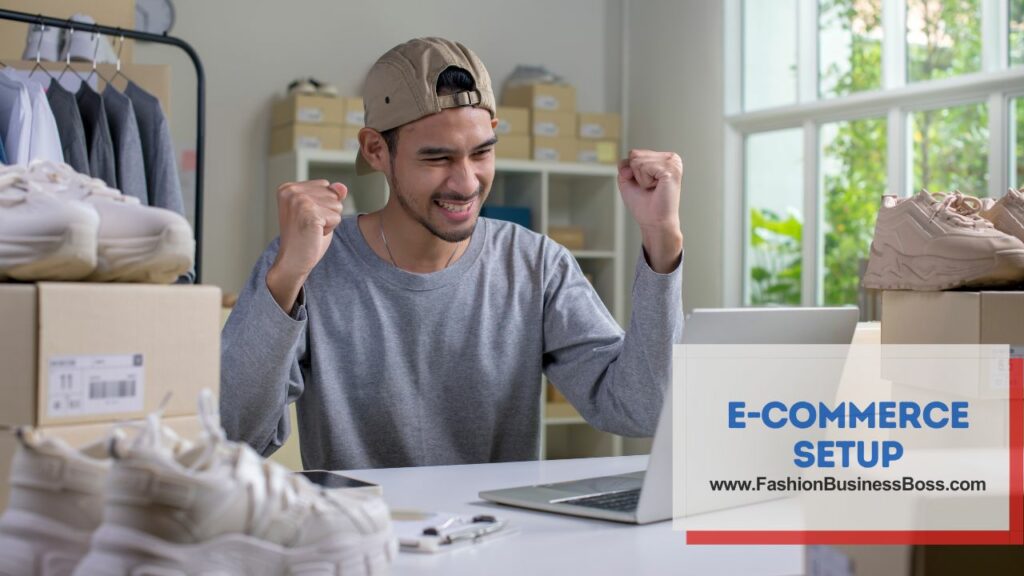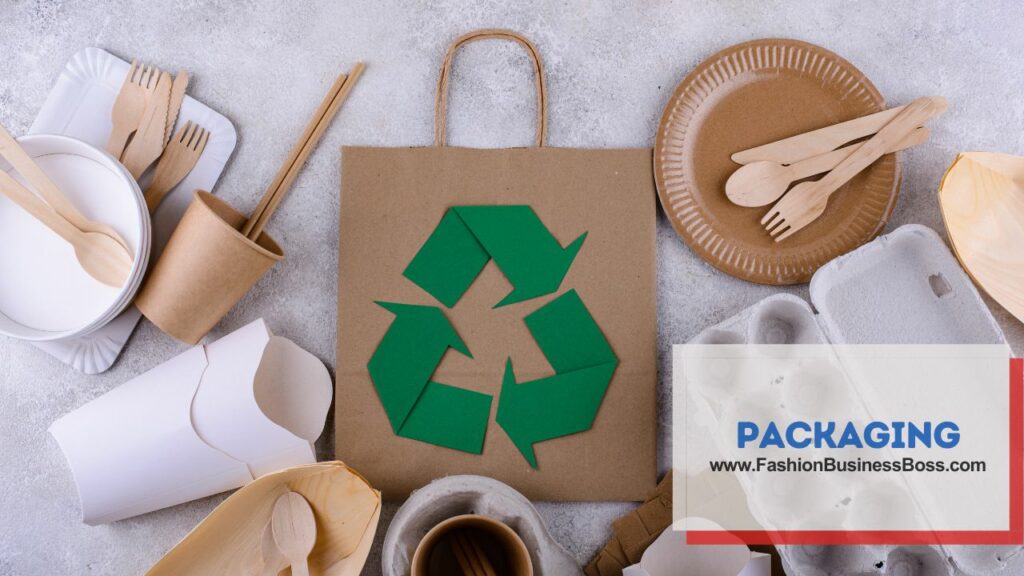Imagine seeing people on the street donning your unique creations, proudly wearing your brand. Starting your clothing brand is an exciting journey that allows you to express your creativity and entrepreneurial spirit. However, it’s not just about designing fabulous clothing; it’s also about knowing how to effectively sell it.
To sell your clothing brand, first, craft a standout collection. Then, get legit with business registration, open an online store, and build a compelling brand. Promote on social media, collaborate with influencers, and sell via e-commerce to connect with your audience and boost sales.
In this article, I will walk you through the steps to turn your fashion dream into a thriving business.
Vision and Design

The foundation of every clothing brand is a vision, and yours should be as unique as you are. Start by identifying your style—whether it’s the casual charm of streetwear, the elegance of high fashion, or the eco-consciousness of sustainable clothing.
Define Your Style
Dive into what makes your clothing special. Is it the comfort, the luxury, or the sustainability factor? Hone in on that unique quality that sets you apart.
Read more about:
Market Research
Get to know your playing field. Investigate your competitors and get acquainted with your target market. What’s missing in the fashion landscape that your brand can fill? Look for gaps in the market where your unique style and offerings can shine.
Create a Brand Identity
Your brand’s identity is its signature. Develop a captivating brand name, a memorable logo, and a tagline that captures the essence of your vision. This identity will be the face of your brand, reflecting your values and aesthetics.
Your journey into the world of fashion starts with this solid foundation—a clear vision of your style, thorough market research, and a captivating brand identity. These steps will guide your brand toward its unique place in the fashion industry.
Business Setup
Before you dive into the exciting world of selling your clothing brand, it’s essential to lay a strong foundation. This groundwork involves ensuring your brand is both legally and financially prepared for the journey ahead.
Legal Registration
The first step is to get your business officially registered. This not only legitimizes your brand but also offers vital legal protection. Additionally, consider trademarking your brand name and logo. Trademarks safeguard your brand’s identity, preventing others from using your unique elements without permission.
Business Plan
Crafting a well-thought-out business plan is like drawing up a roadmap for your brand’s achievement. It should detail your objectives, budget, and marketing strategy. Your plan acts as a guiding document, helping you stay on course and make informed decisions as you move forward.
Finances

Money matters are a crucial aspect of setting up your clothing brand. You’ll need funds for various aspects of your business, such as manufacturing, marketing, and e-commerce platforms. Secure funding through savings, loans, investors, or grants, depending on your financial situation. Managing your budget wisely is equally important; keep a close eye on expenses to ensure you’re on track.
Starting a clothing brand is an exciting venture, but it’s also a business, and like any business, it requires a strong legal and financial foundation. By taking care of these aspects, you not only protect your brand but also set it up for long-term growth.
This groundwork ensures that as you move forward, your brand is built on a sturdy base, ready to withstand the challenges and opportunities that lie ahead. So, don’t rush this step; invest the time and effort needed to ensure your brand’s solid footing.
Read more about: Your Business Journey: Starting a Rental Clothing Company
Manufacturing and Sourcing
Once your creative designs are finalized, the next exciting step is to bring them to life. This stage involves deciding how you’ll manufacture your clothing and where you’ll source the necessary materials.
Manufacturer Selection
Choosing the right manufacturer is paramount. Look for a manufacturer whose values align with your brand’s ethos and maintain high-quality standards. You want someone who can faithfully translate your designs into beautiful, well-crafted garments.
Materials
Selecting the right fabrics and materials is crucial. These materials should not only complement your designs but also resonate with your brand’s sustainability goals if that’s part of your vision. Sustainable materials not only appeal to eco-conscious consumers but also reflect a commitment to responsible fashion.
Prototyping
Before full-scale production, it’s wise to create prototypes. Prototypes allow you to test your designs in a tangible form, helping you identify any necessary adjustments. It’s a vital step in ensuring that the final product aligns with your vision and quality standards.
Manufacturing and material sourcing are the steps that breathe life into your clothing brand. By carefully choosing the right manufacturer, selecting suitable materials, and prototyping, you set the stage for creating garments that not only reflect your unique designs but also meet the expectations of your target audience. These steps are where creativity meets craftsmanship, bringing your vision one step closer to reality.
E-Commerce Setup

In this digital era, having an online presence is essential for the improvement of your clothing brand. Setting up an e-commerce store is your ticket to reaching a wide audience and presenting your clothing in the best possible way.
Website Development
Start by creating a website that’s user-friendly and visually appealing. Your website should be easy to navigate, ensuring that visitors can browse your clothing collections effortlessly. A well-designed website enhances the overall shopping experience.
Read more about: Your Clothing Business Budget: Setting the Stage for Growth
Professional Photography
High-quality images are your brand’s visual storytellers. Investing in professional photography for your clothing is a must. These images not only showcase your garments in the best light but also make your website and social media platforms visually engaging and attractive.
E-Commerce Platform
When it comes to choosing an e-commerce platform, pick one that aligns with your brand’s specific needs. Options like Shopify, WooCommerce, or Etsy offer various features and customization options, so select the platform that best suits your brand’s goals and requirements.
Your clothing brand’s online presence is like a virtual storefront, and it’s where potential customers will first interact with your brand. By focusing on website development, professional photography, and the right e-commerce platform, you’re laying the foundation for an effective online presence that can help your brand thrive in the digital age. These steps ensure that your clothing is presented in the best possible light, making a lasting impression on your customers.
Brand Promotion
With your clothing creations ready, it’s time to shine a spotlight on your brand and engage with your intended audience.
Social Media
Platforms like Instagram, Facebook, and Pinterest are your best friends for showcasing your designs. Post captivating photos, share your brand’s story, and interact with your audience by responding to comments and messages. Social media lets you build a loyal following and create a community around your brand.
Influencer Marketing
Team up with fashion influencers to expand your brand’s reach. These influencers have a dedicated following who trust their fashion advice. Their endorsement can introduce your brand to a broader audience, boosting visibility and credibility.
Email Marketing

Building an email list is a smart move. It allows you to keep your audience informed about new collections, special promotions, and events. Email marketing is a direct and effective way to nurture customer relationships and encourage repeat business.
Promoting your clothing brand is all about connecting with your audience and where they spend their time. Social media, influencer collaborations, and email marketing are powerful tools for making those connections and ensuring your brand gets the attention it deserves. So, put yourself out there and let your fashion creations shine!
Read more about: Your Fashion Empire Begins: Opening a Clothing Boutique
Sales and Distribution
At the heart of your clothing brand’s journey is the desire to get your creations into the hands of eager customers. To do this, you need to strategize how you’ll distribute your products effectively.
Online Sales
A smart starting point is to prioritize direct-to-consumer sales through your website. This approach gives you full control over your brand’s image and customer interactions. Your website acts as your virtual storefront, allowing customers to explore your collections and make purchases with ease.
Wholesale
Expanding your reach might involve considering wholesale options. This means selling your clothing to boutiques and department stores. While it can open doors to a broader customer base, it also requires careful consideration of pricing, volume, and maintaining your brand’s identity in retail spaces.
Pop-Up Shops
To introduce your brand to new audiences and create buzz, think about setting up temporary retail locations, known as pop-up shops. These pop-ups offer a unique opportunity for customers to experience your brand in a physical space, fostering a deeper connection and driving sales.
Customer Experience
A thriving brand places its customers at the center, ensuring they enjoy a fantastic shopping experience.
Customer Service
Delivering excellent customer support is vital. Promptly addressing inquiries and concerns shows that you care. It fosters trust and loyalty, making customers feel valued and heard.
Packaging

Don’t underestimate the power of packaging. Craft visually appealing and eco-friendly packaging that elevates the unboxing experience. This not only adds a touch of excitement but also reflects your brand’s commitment to sustainability.
Return and Exchange Polic
Clear and fair policies for returns and exchanges are essential. They provide customers with confidence in their purchases. When shoppers know they can easily return or exchange an item, they’re more likely to purchase in the first place.
Your brand’s greatness hinges on the relationships you build with your customers. Exceptional customer service, thoughtful packaging, and fair return policies are tangible ways to demonstrate your commitment to their satisfaction.
By prioritizing these aspects, you not only create loyal customers but also enhance your brand’s reputation in the competitive world of fashion.
Read more about: Your Fashion Journey: Creating Your Own Brand
Analytics and Adaptation
Keeping a finger on the pulse of your clothing brand’s performance is key to ensuring its growth.
Analytics Tools
Leverage user-friendly tools like Google Analytics to keep tabs on crucial data. These tools help you track website traffic and sales, providing insights into what’s working and what needs attention. By understanding customer behavior, you can make informed decisions.
Customer Feedback
Your customers are a valuable source of information. Pay close attention to their feedback and suggestions. Their insights can guide you in making improvements, whether it’s about the fit of a garment, the website’s usability, or the choice of colors in your collections.
Adapt to Trends
Fashion is ever-evolving, and staying relevant is vital. Keep an eye on the latest fashion trends and shifts in consumer preferences. Be ready to adapt your collections accordingly, ensuring your brand remains in tune with what’s “in.”
By utilizing analytics tools, listening to your customers, and adapting to trends, you not only stay on top of your brand’s performance but also position yourself for long-term growth in the dynamic world of fashion.
These practices not only enhance your brand’s appeal but also foster a loyal customer base that appreciates your commitment to delivering quality and style.
Scaling Your Brand
As your clothing brand flourishes, it’s natural to contemplate ways to broaden your horizons and reach even greater heights.
Collaborations
One exciting avenue is collaborating with other brands or designers. By teaming up, you can create unique and enticing special collections that draw a wider audience. These partnerships can infuse fresh ideas and energy into your brand.
International Markets
Once your brand gains recognition and a strong following, ponder the prospect of expanding into international markets. Taking your designs overseas can introduce your brand to a whole new world of fashion enthusiasts, opening doors to diverse styles and preferences.
Diversify Product Line

To keep your brand versatile and appealing, consider diversifying your product line. Think about adding accessories or complementary items that align with your brand’s aesthetics and values. This not only caters to a broader customer base but also enhances the overall shopping experience.
Expanding your clothing brand isn’t just about growing; it’s about evolving and adapting to the changing landscape of the fashion industry. Collaborations, international ventures, and product line diversification can be pivotal steps on your journey to staying innovative and captivating in the world of fashion.
Read more about: Your Modest Clothing Line: Making It Happen
Persistence and Passion
Creating a thriving clothing brand is a journey that demands dedication and patience. It’s crucial to stay committed, adaptable, and resilient throughout the process.
Learn from Mistakes
Setbacks are part of the game. When things don’t go as planned, don’t lose heart. Instead, view them as valuable lessons. Every mistake is an opportunity to grow and refine your brand. Keep your focus on progress and keep moving forward.
Network
Building connections in the fashion industry is vital. Reach out to fellow professionals and entrepreneurs who can offer guidance and support. Networking can provide insights, collaborations, and potential partnerships that may prove invaluable in your brand’s growth.
Stay True to Your Vision
Your brand began with a unique vision and purpose. Don’t lose sight of why you embarked on this journey. Let your passion continue to fuel your creativity and drive. Your authentic vision is what sets your brand apart and resonates with your audience.
In the world of fashion, there are no shortcuts to achieving your goals. It’s the passion to create, the ability to learn from setbacks, the connections you build, and your unwavering commitment to your vision that will propel your clothing brand to new heights. Stay true to yourself, keep learning, and keep forging ahead on your path to progress.
Summary
Starting your clothing brand is a challenging yet fulfilling endeavor. With dedication, creativity, and a strong business strategy, you can turn your fashion dreams into a thriving business. From vision to execution, this guide has provided you with a roadmap to navigate the world of fashion entrepreneurship.
So, go ahead, sketch your designs, build your brand, and make your mark in the world of fashion. Your unique clothing creations deserve to be seen and celebrated.
Frequently Asked Questions

1. How much money do I need to start my clothing brand?
To start a clothing brand, your budget may vary widely depending on factors like manufacturing, marketing, and branding. A small-scale brand might need around $5,000 to $10,000, while larger brands may require significantly more capital.
2. How can I protect my clothing brand’s designs from being copied?
To protect your designs, consider trademarking your brand name and logo. Additionally, document your design process and consider filing for design patents or copyright protection for unique designs.
3. How do I find the right manufacturer for my clothing brand?
Finding the right manufacturer involves research and due diligence. Attend trade shows, reach out to industry contacts, and request samples from potential manufacturers. Ensure they align with your brand’s quality and ethical standards before committing.
To learn more about starting your own clothing business, check out my startup documents here.
The information provided by FashionBusinessBoss.com (“The Site”) is for general informational purposes only. All information on the Site is provided in good faith, however, we make no representation or warranty of any kind, express or implied, regarding the accuracy, adequacy, validity, reliability, availability or completeness of any information on the Site. Under no circumstance shall we have any liability to you for any loss or damage of any kind incurred as a result of the use of the Site or Reliance on any information provided on the Site. Your use of the Site and your reliance on any information on the Site is solely at your own risk. This blog post is for educational purposes only and does not constitute legal advice. Please consult a legal expert to address your specific needs. Terms and Conditions. (https://fashionbusinessboss.com/terms-and-conditions/)

Meet Shawn Chun: Entrepreneur and Fashion Business Fan.
I’m a happy individual who happens to be an entrepreneur. I have owned several types of businesses in my life from a coffee shop to an import and export business to an online review business plus a few more and now I create online resources for those interested in starting new ventures. It’s demanding work but I love it. I do it for those passionate about their business and their goals. That’s why when I meet a designer or boutique owner at a craft fair, farmers market, retail location or anywhere else I see myself. I know how hard the struggle is to retain clients, find good employees and keep the business growing all while trying to stay competitive.
That’s why I created Fashion Business Boss: I want to help fashion business owners like you build a thriving business that brings you endless joy and supports your ideal lifestyle.

